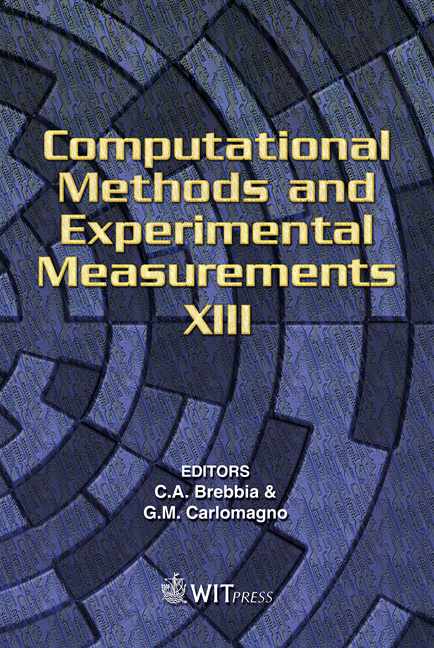Effect Of Thermal Boundary Conditions On Conjugate Natural Convection Flow In Vertical Eccentric Annuli
Price
Free (open access)
Transaction
Volume
46
Pages
10
Published
2007
Size
444 kb
Paper DOI
10.2495/CMEM070451
Copyright
WIT Press
Author(s)
A. Jamal, M. A. I. El-Shaarawi & E. M. A. Mokheimer
Abstract
The effect of thermal boundary conditions on conjugate laminar natural convection heat transfer in vertical eccentric annuli is numerically investigated using the finite-difference technique. Numerical results are presented for a Newtonian fluid of Prandtl number 0.7 in an eccentric annulus. The variation of induced flow rate and total heat absorbed in the annulus are studied for two sets of boundary conditions at different values of geometry parameters (dimensionless annulus eccentricity and radius ratio). In both sets of boundary conditions, one wall is heated isothermally. The other wall is kept at the inlet fluid temperature for the first set of boundary conditions and adiabatic for the second set. The effect of interchanging the wall thermal conditions for each set is also considered. Analysis reveals that heating the outer cylinder wall or keeping one of the annulus walls insulated is more useful for inducing flow (thermosiphons). Keywords: natural convection, heat transfer, eccentric annuli, thermal boundary conditions, finite difference method, Newtonian fluid. 1 Introduction The study of steady laminar induced flow in vertical eccentric annuli with conjugate heat transfer is of great importance because of its many engineering applications in electrical, nuclear, solar and thermal storage fields. In the
Keywords
natural convection, heat transfer, eccentric annuli, thermal boundary conditions, finite difference method, Newtonian fluid.





